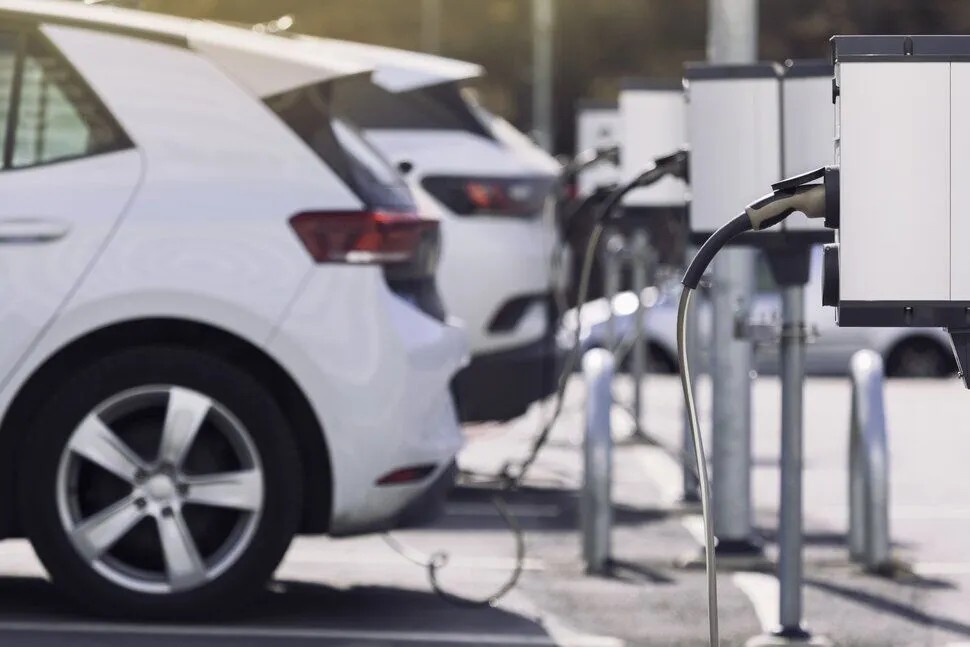Introduction
Topper, a Professional EV Charger Manufacturer in China, Delivers Reliable Electric Vehicle Charging Stations and Comprehensive Charging Solutions.
The global shift toward electric vehicles (EVs) represents a revolutionary change in how we think about transportation and energy consumption. Central to this transformation are EV charging stations—the critical infrastructure that keeps electric vehicles powered and on the road. As EV adoption accelerates worldwide, it becomes increasingly important for consumers, businesses, and policymakers to understand how these charging stations operate. This article explores the detailed process of EV charging, from plugging in your vehicle to having it fully charged and ready to go.
EV Charging Stations: How the Charging Process Works
Charging an EV is a sophisticated process involving multiple steps designed to ensure safety, efficiency, and optimal battery health. Here’s a step-by-step look at what happens when you connect your EV to a charging station:
1. Initial Handshake
When you plug your vehicle into a charger, the first action is a communication exchange—known as the initial handshake—between the vehicle and the charging station. This step verifies the connection and allows the vehicle to share vital information, such as battery charge level, battery health, and any charging preferences. The station uses this data to customize the power delivery for your specific vehicle.
2. Safety Systems Activate
Safety is paramount in EV charging. Both the vehicle and the charger run diagnostic checks to ensure proper grounding, the absence of electrical faults, and that voltage and current levels fall within safe operating ranges. The vehicle also confirms its battery’s readiness to avoid issues like overcharging or overheating.
3. Power Negotiation
Next, the vehicle and charger agree on how much power will be delivered. Charging stations come in various levels—Level 1, Level 2, and DC fast charging—each providing different power outputs. Based on the vehicle’s battery state and capabilities, the charger adjusts its output to an appropriate level.
4. Active Charging
Once power negotiation is complete, the charger delivers electricity to the battery. Throughout this phase, continuous monitoring occurs for:
- Temperature: Preventing overheating of the battery, charger, and cables.
- Voltage Levels: Keeping voltage within safe limits to avoid battery damage or inefficient charging.
- Current Flow: Regulating the current to match the vehicle’s requirements.
- Battery Response: The vehicle’s Battery Management System (BMS) ensures the battery accepts the charge optimally, making adjustments as needed.
5. Charge Management
Charging is dynamically managed to maximize battery life and safety:
- Dynamic Power Adjustment: Power output may be gradually reduced as the battery nears full charge to prevent overcharging.
- Thermal Management: Active cooling systems in the EV and charging station maintain ideal temperatures.
- Safety Monitoring: Any detected faults will pause charging, alerting the user immediately.
Types of EV Charging
EV charging comes in three main levels, each offering different speeds and use cases:
- Level 1 Charging: Uses a standard 120-volt household outlet, ideal for overnight home charging but is the slowest method.
- Level 2 Charging: Employs a 240-volt supply and is much faster, commonly used in homes and public stations.
- DC Fast Charging: The quickest method, delivering high power directly to the battery and capable of charging up to 80% in about 30 minutes.
Public EV Charging Stations: What You Need to Know
Public charging stations are becoming widespread in shopping centers, office parks, and highway stops. Using these stations efficiently requires understanding a few key points:
Access and Payment
- Access Control: Some stations require key fobs, RFID cards, or smartphone apps for access.
- Payment Options: Can include credit/debit cards, mobile apps, or subscription services.
- Pricing Control: Some owners can set their own prices and usage times, offering flexibility and revenue potential.
Commercial Charging Solutions
Businesses can install customizable stations with features like output control, user management, and network connectivity for usage tracking and payment processing—helping them provide reliable service while managing costs.
Key Features
- Output Regulation: Adjust charging power based on vehicle needs and grid capacity.
- Time-Based Charging: Set time limits or schedules to optimize usage.
- Integrated Payment Systems: Allow for seamless user payments through apps or cards.
Conclusion
EV charging stations form the backbone of the electric vehicle ecosystem, ensuring safe, efficient, and convenient charging experiences for drivers worldwide. From the initial connection handshake to dynamic power adjustments, these systems are engineered to protect your vehicle and maximize battery performance.
As EV technology continues to advance, charging stations will become faster, smarter, and more integrated into everyday life. Understanding how these stations work can help you make informed decisions, whether charging at home or on the go, and enhance your overall EV ownership experience. Know more about Google SEO Directory





Comments